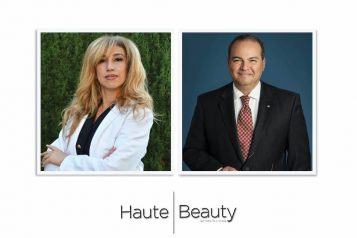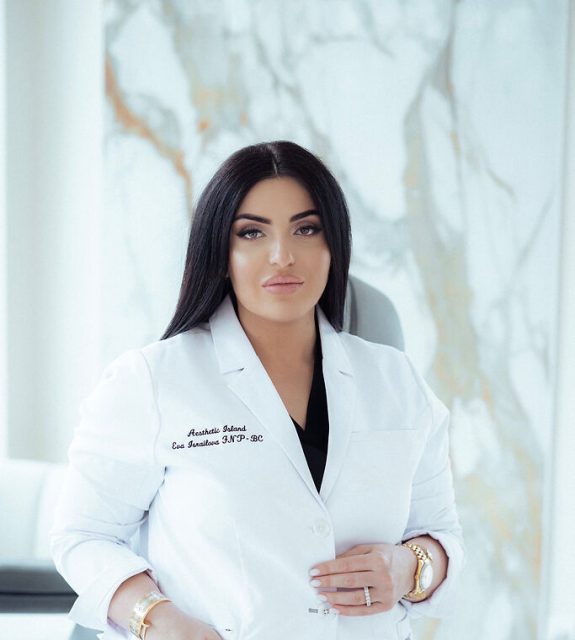 Photo Credit: Shutterstock
Photo Credit: Shutterstock
Dr. Michael P. Ogilvie is a plastic and reconstructive surgeon who is double board-certified by both the American Board of Surgery, as well as, the American Board of Plastic Surgery. A native Chicagoan, he was born and raised on the south side of Chicago in Hyde Park and is proud to serve the community he loves. Dr. Ogilvie prides himself on providing his patients with the highest levels of care founded in both surgical expertise and artistic vision to give the most natural results possible. With his highly personalized approach and meticulous attention to detail, Dr. Ogilvie strives to fully understand his patients’ goals to provide realistic expectations and results by employing a breadth of surgical and non-surgical aesthetic and reconstructive procedures to enhance the face, breast and body.
Haute Beauty sits down with Dr. Ogilvie to learn more about how exactly he performs breast implant surgery.
HB: When someone comes to your office seeking breast augmentation with implants, how does this process begin?
When a prospective patient comes in for a breast augmentation consult, the first thing I want to understand is what exactly are their aesthetic goals, to determine how I can best help them achieve them.
In my practice, it is not about just picking the largest implant possible but choosing the right implant for the right patient to help achieve their desired look but also give them the most natural appearing look as possible.
Some of the desires I look to assess in a patient include:
• Whether they are looking for a subtle or dramatic change in cup size.
• Whether they want or need to change the shape of their breasts.
• Whether they are ok with implants or if they prefer a more natural form of augmentation.
I let patients know that I am fairly conservative and while I will do everything I can to achieve their goals, I will never choose an implant that does not fit with their body size and overall silhouette. In my hands, breast augmentation is not about completely changing the patients’ look but more about enhancing what they already have.
Once I have fully understood what my patient is looking to achieve, the rest of the consultation is about picking the right implants. I take very detailed and thorough measurements in order to understand what will work best with their body type. Once I know this, we can then have a discussion about a range of sizes that would work best, understanding that most women want to go up one or two cup sizes.
Breast implant surgery with a lift:
Some patients, particularly those desiring mommy makeovers (breast augmentation and abdominoplasty), not only desire more breast volume but they also have a degree of droopiness that needs to be corrected as well. If I should notice droopiness at the time of the physical exam, we will then have a discussion about doing a breast augmentation and lift at the same time.
Incision locations:
Part of the consultation is having a discussion with patients about the location of their incisions. Primarily I use the breast crease or around the nipple-areola.
I discuss the pros and cons of each incision, in order to help patients make the most informed decision. That being said, I do not do armpit or belly button incisions and will have a detailed discussion as to why.
 Photo Credit: Shutterstock
Photo Credit: Shutterstock
HB: Who is a good candidate for breast implant surgery?
A good candidate for implant surgery is really anyone who wants a significant increase in their breast volume, typically greater than one cup size. If they are looking for larger volume increases, particularly in the upper part of the breasts, those patients are more geared toward implants. If they want a more modest increase in volume and/or are not keen on having implants in place, those patients would be more suitable for fat grafting to the breasts, given they have adequate donor sites.
HB: What is recovery like?
I tend to do more rapid recovery augmentations, meaning that I limit my dissection as much as possible, look to make my surgery as atraumatic as possible, and also add longer-acting anesthetics to the surgical sites in order to better help with pain control.
I tend to get my patients back up and moving within three to four days. While I don't allow for any heavy lifting or strenuous physical activity for one month, but most patients are back to normal daily activities within a few days.
In terms of medicine, I do prescribe a week of narcotics, not really because many patients need it, but more in case they have breakthrough pain or sleeping at night. Most patients do well with extra-strength Tylenol. I also give patients nausea medicine as well as Arnica Montana, to help with bruising and swelling.
For more information, visit Dr. Michael P. Ogilvie, MD, MBA's social media:





















